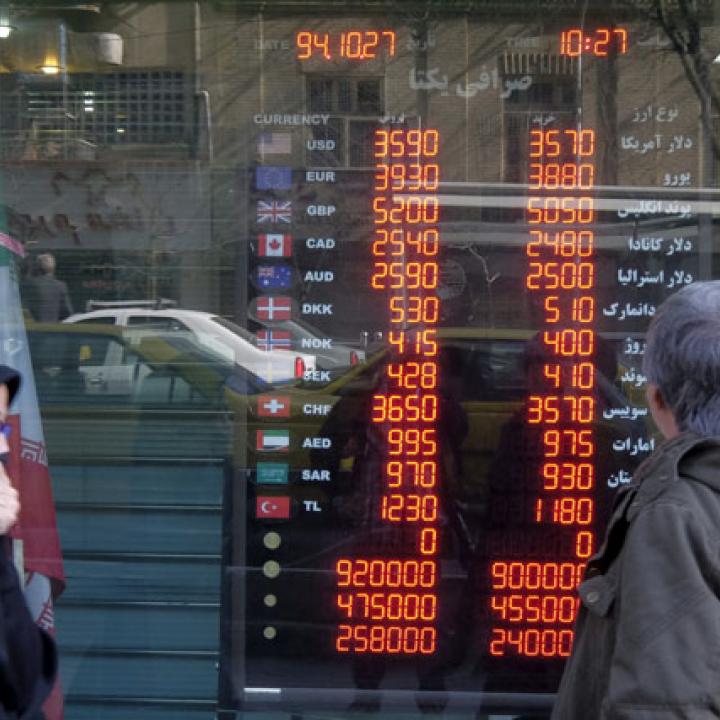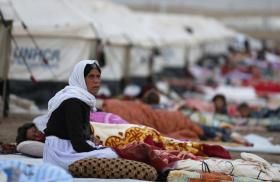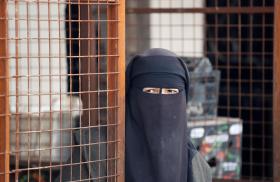
- Policy Analysis
- PolicyWatch 2993
Reimplementing Iran Sanctions: Where, How, and How Much?

Part of a series: Counterterrorism Lecture Series
or see Part 1: U.S. Efforts against Terrorism Financing: A View from the Private Sector
Read or watch a conversation with former Treasury and State Department officials on how the Trump administration should go about renewing financial pressure on Iran's oil industry and other sectors.
On July 17, Daniel Glaser, Suzanne Maloney, and Katherine Bauer addressed a Policy Forum at The Washington Institute. Glaser is a principal with the Financial Integrity Network and former assistant Treasury secretary for terrorist financing and financial crimes. Maloney, a senior fellow at Brookings, directed the 2004 Council on Foreign Relations Task Force on U.S. policy toward Iran. Bauer is the Institute’s Blumenstein-Katz Family Fellow and a former Treasury official. The following is a rapporteur’s summary of their remarks.
DANIEL L. GLASER
The previous administration brought together a global coalition to put financial pressure on the Iranian economy. That coalition does not exist anymore. Yet one cannot underestimate America’s ability to put intense pressure on the Iranian financial system and economy in the current environment.
Even after the Joint Comprehensive Plan of Action was implemented, Tehran did not feel it was getting the degree of sanctions relief it had anticipated, and U.S. pressure never truly went away. For this reason, Iran’s economy still suffers from significant weakness today. International businesses and financial institutions have had their exit plans ready ever since the JCPOA was reached, since sanctions snapback was built into the agreement. This made it easier for them to react swiftly and pull out of the Iranian market once President Trump announced his decision to withdraw from the JCPOA in May.
Some have argued that selective enforcement of reimposed U.S. sanctions may prevent Washington from continuing or escalating its pressure, but this argument is seriously flawed. The fact of the matter is, when foreign firms are forced to choose between business with Iran and access to the U.S. financial system, they are going to choose the latter.
To be sure, some small- and medium-size companies without significant exposure to the U.S. financial system may still decide to do business with Iran. Indeed, this was an issue during the sanctions regime under the Bush and Obama administrations. But these smaller entities are not going to have a significant impact on the Iranian economy, which requires more than piecemeal involvement in the global economy if it is to improve over the long term.
Some point to China as the key to blunting the force of U.S. sanctions. Although there is a market for Chinese business in Iran, it is not a panacea for the country’s economic problems. The Chinese market does not replace everything the West can offer, and larger Chinese firms remain exposed to U.S. sanctions.
It is important to keep in mind that sanctions are a tool used to support a policy and a broader strategy, and the administration’s end goal in reimposing them on Iran remains unclear. Does it seek to bring the Iranians back to the negotiating table or compel them to acquiesce to Secretary of State Mike Pompeo’s twelve demands? Or does the administration have an unstated goal of facilitating the Iranian regime’s collapse?
SUZANNE MALONEY
There are two schools of thought on the implications of reimposing sanctions. First, some believe that Iran is in a better position than it was when U.S. sanctions were originally imposed. At the time, the Islamic Republic had reached the disastrous climax of the Ahmadinejad presidency, and political elites were still feeling the ripple effects of massive unrest spurred by his illegitimate reelection two years earlier. By mid-2011, the entire political establishment had turned on him.
Moreover, unlike in 2011, there is no European Union embargo on Iranian oil today. In fact, there is an incentive to keep financial channels open to Iran, and some countries have shown much greater tolerance toward smuggling and other sanctions evasion schemes. In other words, Washington will not find the same level of international cooperation on enforcement that occurred from 2011 to 2013—a potentially troubling prospect given that the Iranian government is now more experienced in handling the bite of economic sanctions.
Iran has also benefited from changes in the energy sector and the regional geopolitical situation. Greater uncertainty surrounds oil markets today, especially given the reduction of exports from Venezuela. On the regional front, Iran has gained more influence in Iraq, successfully propped up Bashar al-Assad in Syria, established a greater presence along Israel’s borders, and drawn its Gulf rivals into war with the Houthis in Yemen.
The second school of thought on reimposing sanctions is that they are coming at a time when Iran is much weaker economically. The country’s currency was already in steep collapse before President Trump withdrew from the JCPOA, while global trade and letters of credit in U.S. dollars are even higher than in 2011. And although Russian and Chinese firms may try to take advantage of the vacuum left by European companies departing Iran, a lot of these firms are far more globalized than they were even just a few years ago, and therefore more susceptible to pressure. In terms of energy markets, even with Venezuela offline, Saudi Arabia and Russia are eager to supplement their exports to fill the gap.
Internally, Iran is experiencing much deeper levels of public cynicism than it was in 2011. Iranians are undergoing a crisis in rising expectations and, simultaneously, a crisis in the regime’s legitimacy. At a time of high unemployment and a youth demographic bulge, the government has been unwilling and unable to pursue reforms that would allow it to capitalize on the opening provided by the JCPOA. Meanwhile, it has mishandled various recent crises in a very public way. The regime has long grounded its power in its ability to govern competently and deliver on promises of goods and services for the Iranian people, but years of setbacks have put the Islamic Republic in a slow-motion metastasis. Although regime collapse is unlikely, the current government will not be able to manage these simultaneous crises.
KATHERINE BAUER
As key dates related to the reimposition of certain sanctions approach, the Trump administration retains considerable discretion on decisions related to waivers, licenses, targeting, and how vigorously to enforce secondary sanctions. These sanctions need not be implemented as they were previously—rather, they should target current vulnerabilities in the Iranian economy. Below are five suggestions on how the administration can proceed.
First, it should ensure that Iran’s oil export revenues are locked up, depriving Tehran of a key source of hard currency while assuring its customers of adequate supplies and preventing global oil prices from rising. This restriction on the movement of Iran’s oil revenues will go into effect at the same time as reductions are being implemented among importers of Iranian oil. U.S. officials should engage with financial officials in these countries to ensure that banks have legal cover to withhold Iranian revenues.
Second, the administration should continue to pursue joint action with international partners on Iran’s malign behavior outside the nuclear realm, even where such action would be politically difficult. Many in Europe remain concerned about Iran’s ballistic missile development and weapons proliferation, especially its supply of rockets to Hezbollah in Lebanon and Syria, and to the Houthis in Yemen.
Third, the United States should develop country-level sanctions implementation plans in regional hotspots where Iran and its proxies are active, identifying roles for regional partners such as the Gulf states. For example, although sanctions alone are unlikely to drive Tehran out of Syria, they can draw attention to Iranian involvement there, raise the costs of continuing it, and disrupt it to a certain degree.
Fourth, U.S. officials should continue calling out Iran’s deceptive financial activity. Countering the development of workarounds will require cooperating with partners in the official and private sectors, listening to the implementation challenges they face and working to minimize them even when waivers or licenses are required.
Fifth, short of full implementation of Iran’s Financial Action Task Force “action plan” (including appropriate criminalization of terrorist financing), the United States should press for reimposition of FATF countermeasures on Iran. The Iranian government sought to reengage that organization after finalizing the JCPOA, but it has been unable to adopt legislation acceding to international counterterrorism treaties. According to detractors in Iran, such treaties run counter to the country’s constitution because some of the terrorist groups targeted by them are merely engaging in a legally permissible effort to end “foreign occupation, colonialism, and racism.”
In short, the United States cannot effectively impose these sanctions unilaterally, so it needs to prioritize them within its broader bilateral relationships, which may involve concessions on other issues. Policymakers should also be mindful of the sustained attention and resources required to make these sanctions work.
This summary was prepared by Erika Naegeli.








